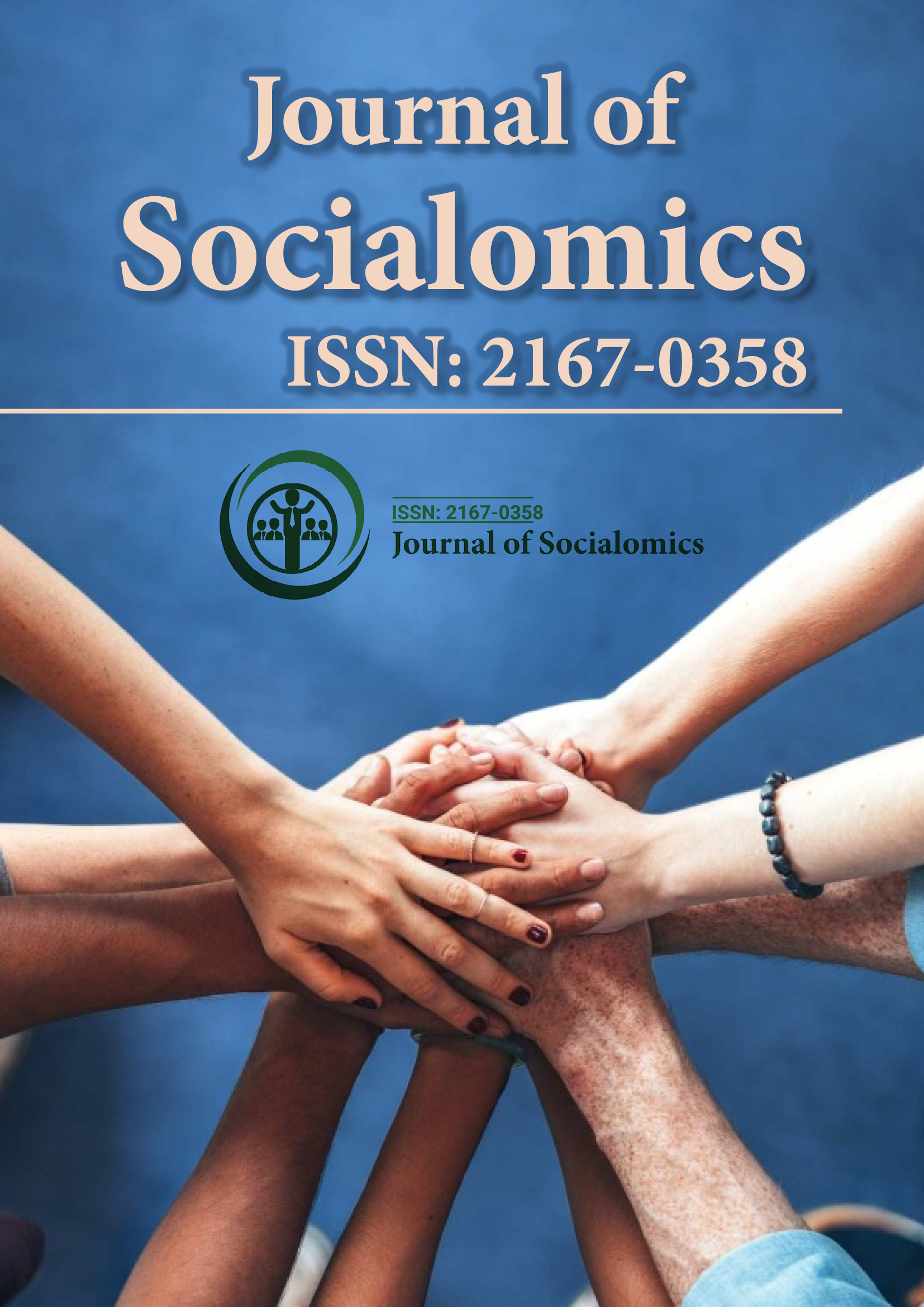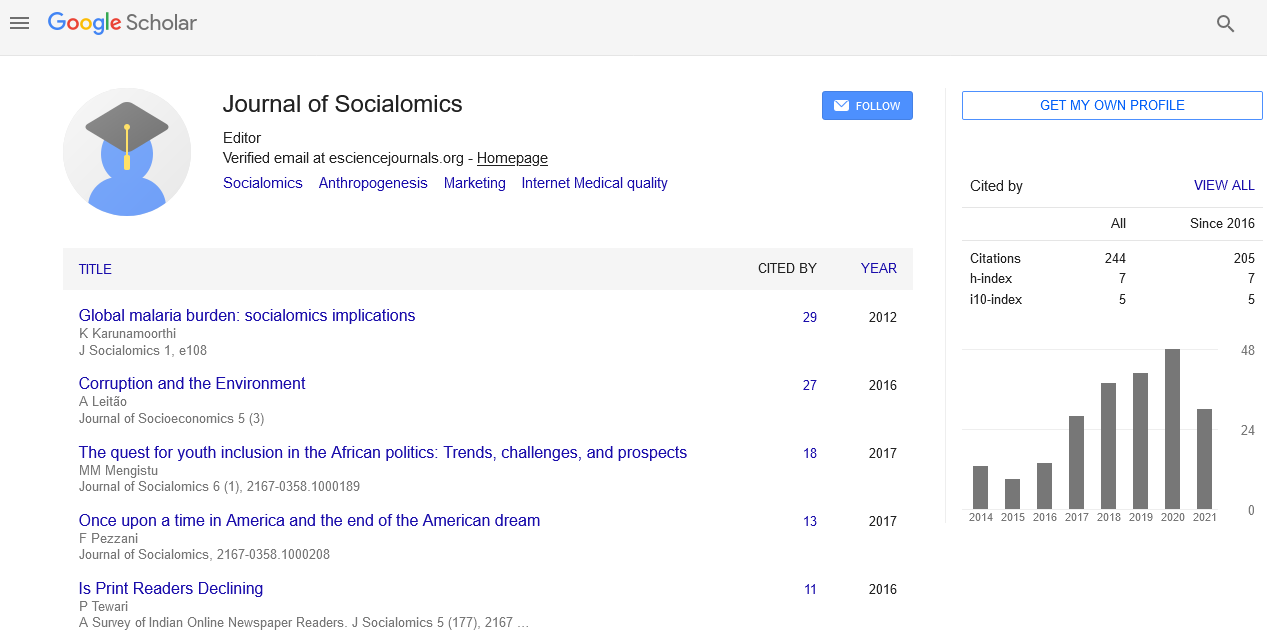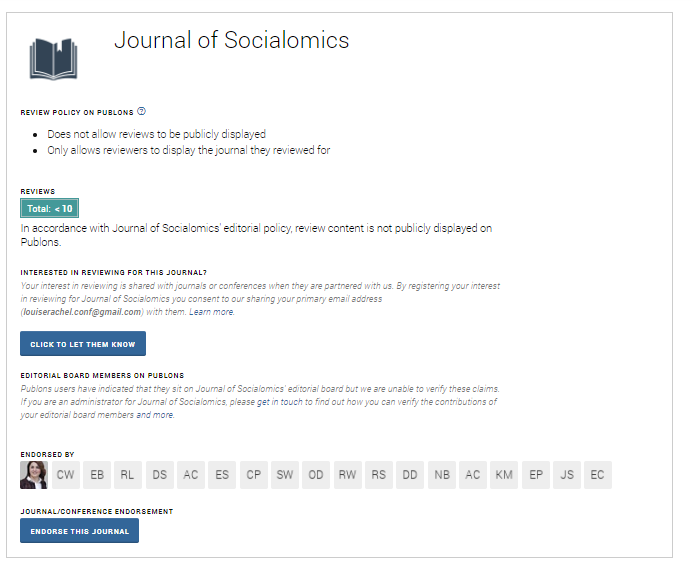Indexed In
- Open J Gate
- Genamics JournalSeek
- SafetyLit
- RefSeek
- Hamdard University
- EBSCO A-Z
- OCLC- WorldCat
- Publons
- Google Scholar
Useful Links
Share This Page
Journal Flyer

Open Access Journals
- Agri and Aquaculture
- Biochemistry
- Bioinformatics & Systems Biology
- Business & Management
- Chemistry
- Clinical Sciences
- Engineering
- Food & Nutrition
- General Science
- Genetics & Molecular Biology
- Immunology & Microbiology
- Medical Sciences
- Neuroscience & Psychology
- Nursing & Health Care
- Pharmaceutical Sciences
Perspective - (2025) Volume 14, Issue 2
Surveillance Acceptance and Public Sentiment in Urban Spaces
Jacob Steinmann*Received: 26-May-2025, Manuscript No. JSC-25-29730; Editor assigned: 28-May-2025, Pre QC No. JSC-25-29730; Reviewed: 11-Jun-2025, QC No. JSC-25-29730; Revised: 18-Jun-2025, Manuscript No. JSC-25-29730; Published: 25-Jun-2025, DOI: 10.35248/2167-0358.25.14.273
Description
The implementation of surveillance systems in public areas has expanded rapidly across major cities. These systems, often introduced with the justification of security and order, have changed the way individuals interact with urban environments. Public sentiment toward surveillance is shaped by multiple factors, including prior experiences with law enforcement, media portrayal, perceived neighborhood safety, and the transparency of the authorities overseeing these technologies. While some see cameras and monitoring systems as protective, others view them as tools of control. The diversity of responses reveals the complexity of public acceptance and the subtle psychological adaptations that accompany life under observation.
Urban environments have long been places where control and freedom intersect. As surveillance tools increase in visibility and capability, individuals begin to adjust their behavior in ways that are both conscious and subconscious. Some alter their routes, avoid certain gestures, or change their appearance depending on perceived visibility. This adjustment often goes unnoticed by those experiencing it, becoming a normalized part of daily routine. Over time, this conditioning affects comfort levels, personal expression, and trust in public systems. People may avoid expressing dissent or engaging in public acts that were once seen as harmless but now feel risky under constant watch.
Demographic variables such as age, income level, and ethnic background influence how surveillance is interpreted. In neighborhoods with high crime rates or under-policing, residents may welcome surveillance as a method of protection. Conversely, in areas with a history of over-policing, particularly communities of color, these same systems may evoke a feeling of being targeted or profiled. The same camera that brings comfort to one person may cause anxiety in another. These differing interpretations highlight that acceptance cannot be understood in isolation but must be situated within broader social histories and structural conditions.
The media plays a significant role in shaping how surveillance is received. News stories that emphasize crime reduction or the role of cameras in solving major incidents can generate positive associations. At the same time, exposés revealing misuse or illegal data collection can cause public trust to deteriorate. The framing of these narratives affects how residents feel about giving up parts of their privacy. Some people become desensitized, assuming that surveillance is inevitable and resistance is futile. Others become more vocal, participating in advocacy groups or community meetings to push for restrictions or oversight.
There is also a growing divide between perception and reality in how surveillance operates. Many assume that systems are monitored around the clock by trained professionals, when in fact many recordings are only reviewed after incidents occur. This misconception can inflate feelings of safety or suspicion depending on one’s view of the system. Meanwhile, emerging technologies such as facial recognition, behavioral prediction algorithms, and data integration across agencies add further layers to public concern. People may not fully understand how these systems function, but they sense that the implications reach beyond simple crime prevention.
Legal frameworks often lag behind technological developments, which adds uncertainty to how surveillance is experienced. While some cities have passed regulations requiring transparency reports or public approval for new surveillance tools, many still operate without clear guidelines. This lack of regulation feeds public skepticism and erodes the idea that oversight is meaningful. Without consistent communication or demonstrated accountability, people may feel excluded from decisions that affect their daily lives. Participation in public consultation processes is often limited to those already politically active, leaving many voices unheard.
Conclusion
Social media and digital activism have provided tools for both organizing resistance and spreading awareness. Hashtag campaigns, viral videos, and citizen journalism have brought surveillance debates into wider public view. These platforms allow marginalized groups to share their experiences and highlight unequal treatment under monitoring systems. At the same time, these same tools are often monitored themselves, creating a paradox where the act of resisting surveillance is subject to it. This duality adds complexity to public sentiment and raises important questions about autonomy, accountability, and transparency in the digital era.
Citation: Steinmann J (2025). Surveillance Acceptance and Public Sentiment in Urban Spaces. J Socialomics. 14:273
Copyright: © 2025 Steinmann J. This is an open-access article distributed under the terms of the Creative Commons Attribution License, which permits unrestricted use, distribution and reproduction in any medium, provided the original author and source are credited


